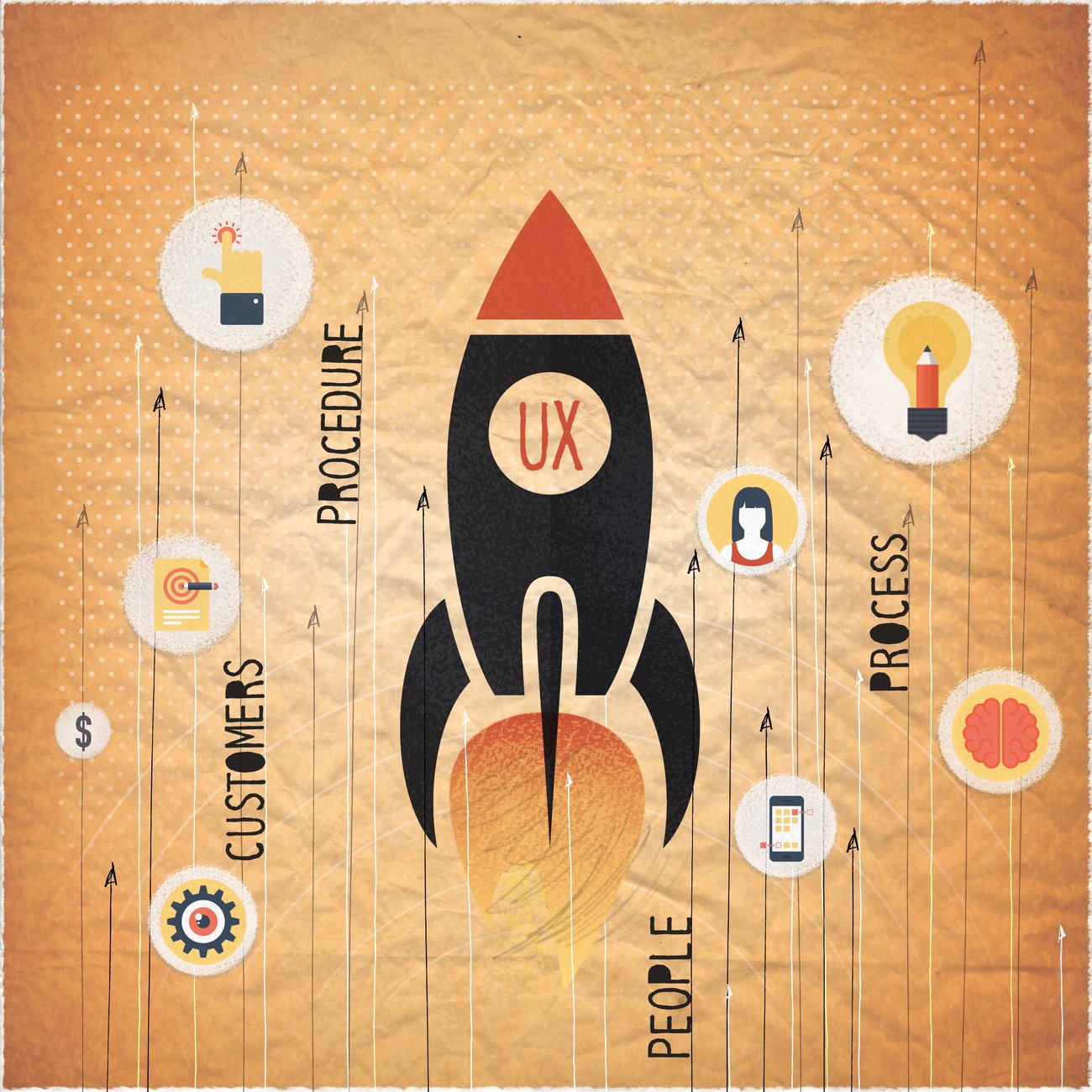Journeys by design: Creating the perfect user experience for your client

The idea of user experience (UX) is everywhere these days, largely due to its application to websites, apps and other digital environments, but it’s not a new idea or an idea limited to online. Pick up any brochure or flyer and you will see the designer has given thought to how they’ll get you to pick it up, how they’ll move your attention around the page, and how they’ll draw you to key messages. A really good designer will think even bigger, focusing on your journey leading up to picking up their work and where they’ll lead you after you put it down.
The irony of good user experience is that often you don’t realise you are being taken on a journey. Bad UX is much easier to spot. In the web world, good UX means you enter a site and it feels like it knows what you need and it makes it easy for you to find it. Navigation is seamless and intuitive and the site keeps presenting things that are of interest to you. If you came to the site because of a promotion or a recommendation, this great experience will positively reinforce perceptions. If you stumbled on the site, then this positive experience will become the basis for your perceptions of the company.
Companies need to apply this sort of design thinking to the overall experience they want their customers to have. I had a recent “easy” experience that required me to download the form, fill it out, scan it, and then email it back. I got a call a week later to say I hadn’t filled it out properly. Easy would have been filling in the form on-line with some smarts built in to tell me I’m not doing it right as I’m filling it in. That company is still marketing to me with the same “easy” message – they needn’t bother.
The irony of good user experience is that often you don’t realise you are being taken on a journey. In the web world, good UX means you enter a site and it feels like it knows what you need and it makes it easy for you to find it.
Back in my corporate days I was fortunate enough to run integrated marketing, operations and customer service teams. I found a great way to design the customer’s experience was to start with a clear customer value proposition (CVP) – Why do customers buy from us? We substantiated this by identifying the proof-points – those things that make the CVP true in the customer’s eyes.
Next we focused on mapping the customer journey from first hearing about us, to finding out more, buying the product, regular communications, through one-off contact with our call centre, right through to the end when a return/benefit was delivered to them. Understanding this journey was fundamental to how we designed our products, communications, processes, service standards, training, hiring policies and how we structured and rewarded our client-facing teams. Every experience in the journey was designed to reinforce the CVP.
Try it. It’s a great way to align messages and behaviours, a good tool for driving change and for ensuring everyone is focused on the same thing – the end user.
These days, as a strategist working with lots of big companies on developing their brand, I apply similar thinking. I’m big on the idea of inside out branding. We focus on what a company wants their brand to stand for and compare this to where they are today. We particularly focus on the customer experience and how the current experience reflects or differs from the desired positioning. The result is a shift analysis that documents the brand journey required to create internal and external alignment. Often we work with the company to change the internal model and culture before working on the external brand expression.
As a design agency we regularly get asked to develop campaigns. Through the briefing process we focus on the end-to-end experience, working with clients to understand the audience needs, perceptions and previous experiences. We also seek to understand the client’s desired outcomes. Often the outcome is sales targets but there is always a process to get to that. Our job is to design the user’s experience at every touchpoint along that process. This starts by thinking about what happens when audiences respond to the campaign via email, web or phone. How do we fulfil? How do we follow up? And how does every touchpoint reinforce core campaign messages, while always moving the prospect closer to the final sales transaction?
Business leaders have to apply this UX approach to the way they design their business models. What applies naturally to websites and campaigns should be applied to HR practices, organisational design and everything else that makes up the business model. When UX becomes baked into the recipe for business, customers have great experiences and willingly take a long-term journey with a company. Now that’s how true long-term value is created.
This is the latest in a series of articles highlighting how good design thinking can address problems and opportunities facing businesses.

Insight Creative is a design communication agency that has been helping businesses achieve their business goals for 40 years. They specialise in brand, digital, environmental experience, marketing and investor communications. www.insightcreative.co.nz
Steven Giannoulis is CEO & Strategy Director at Insight Creative. [email protected]




